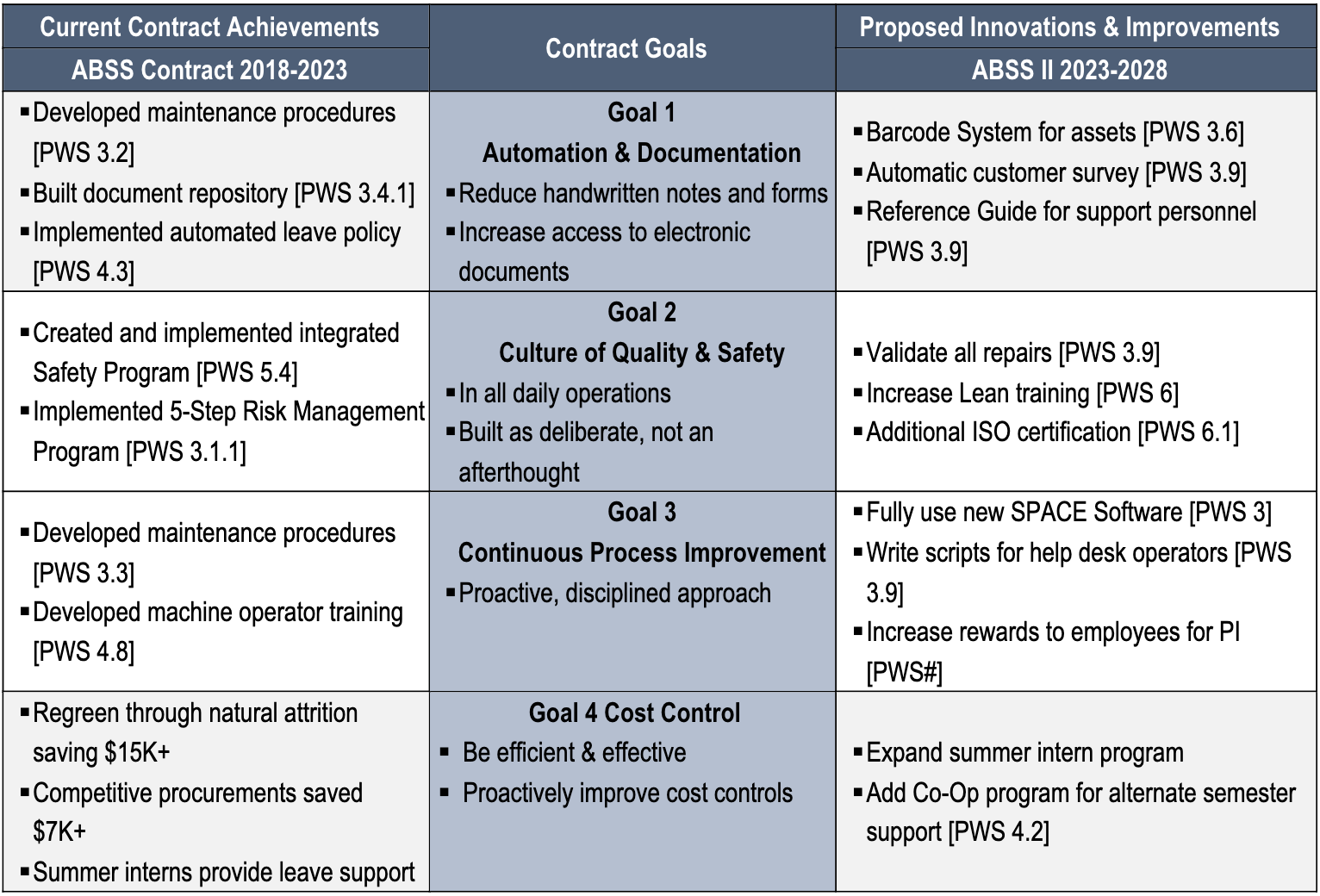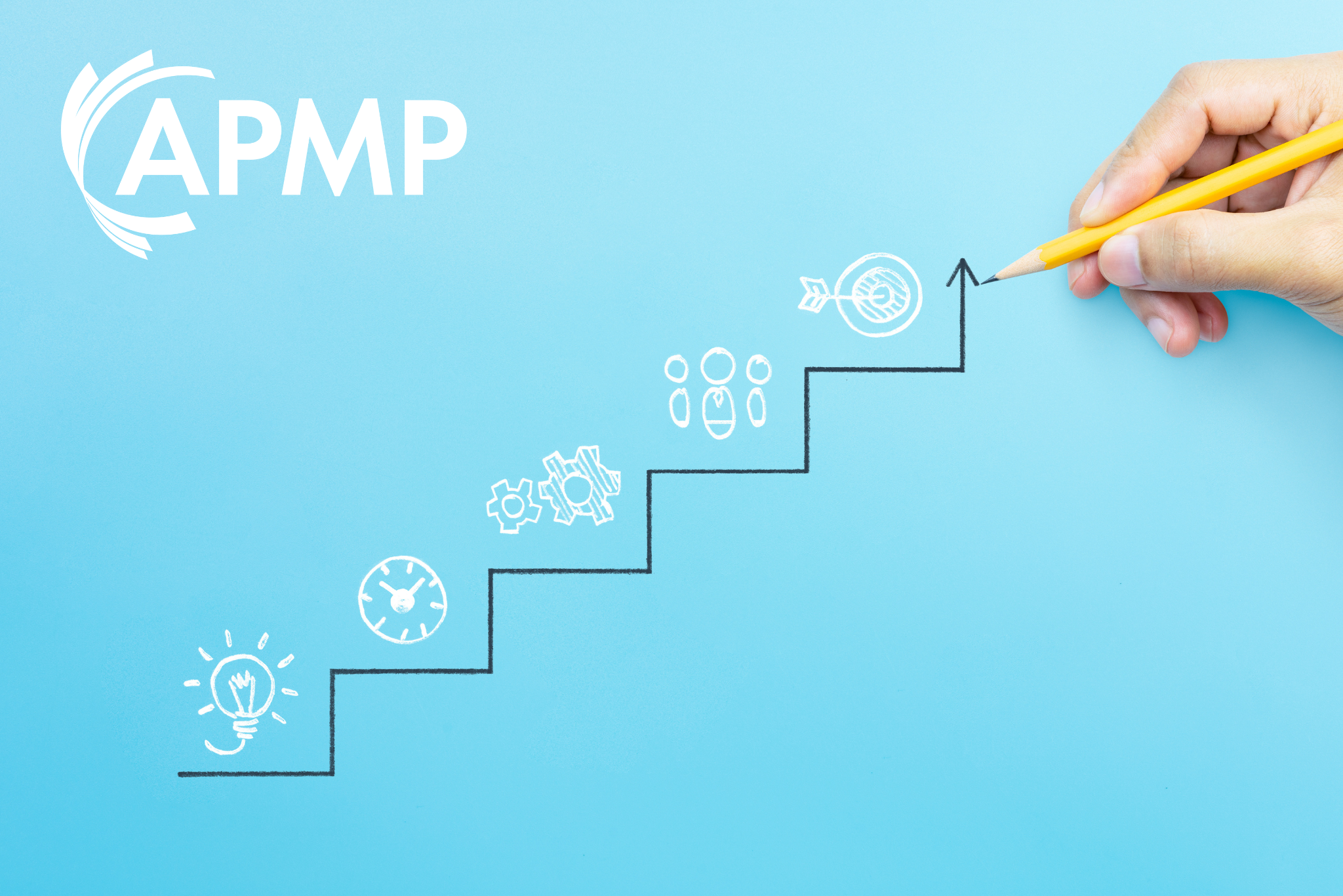Congratulations! You have won a prime contract! Before you know it, contract execution begins and suddenly you are in the unique position of incumbent on a recompete. As incumbent, your company knows the customer and they know your team, your successes, and your expertise. But, do not rely on incumbency alone to win the recompete. Many companies believe it is more difficult to win a recompete than a new contract. As Capture and Proposal Managers, you must think beyond the incumbent mindset and focus on the customer, to leverage the advantage of years of contract success.
Best practices for capture include developing customer concerns, solutions, innovations, discriminators, and proof points. These capture strategies then turn into features in the proposal, which are linked to customer benefits, and supported by proof points. This is the basis of developing win themes.
As the incumbent, you can go further in your strategy by adopting the concept of overarching Contract Goals. Contract Goals set the big picture for the proposed bid and bridge success on the current contract to improvements or innovations for the recompete. It creates a roadmap of team accomplishments in the past and what is in store for the future. They showcase continuous improvement, using the knowledge and experience your team has gained.
This technique is most successful when the Capture Manager, Proposal Manager, teaming partners, and the current contract management team pool their knowledge and skills to develop this roadmap. This may be in a strategy workshop or brainstorming session.
Here is how to implement Contract Goals in the next recompete.
- Compile a list of recompete Proposed Improvements.
- Assemble a list of current Contract Achievements (innovations, improvements, or initiatives).
- Develop broad topic Contract Goals.
- Map Contract Achievements and Proposed Innovations to Contract Goal topics and the proposed Performance Work Statement (PWS).
- Highlight Contract Goals throughout your proposal.
Compile a List of Recompete Proposed Improvements
Capture Managers are masters at developing capture strategy through their interactions with the customers and teaming partners, and by conducting a lot of research! Start with these strategies, which may be called improvements, innovations, or initiatives, for brevity here they are improvements. As the group is working through the steps to develop the Contract Goals, new strategies or improvements may emerge that make the recompete bid even stronger.
Assemble a List of Current Contract Achievements
Research the current contract reports to the customer to extract the achievements the team implemented during the current contract. Review the winning proposal for proposed innovations and validate their implementation. Get the details, including cost and time savings. Ask the right questions and be able to determine what qualifies as an achievement. Here is an example of how purchasing a software product can become an achievement. Find out what team personnel did in this process, such as:
- Researched various software packages.
- Participated in free trials.
- Interviewed references and technical experts.
- Performed a cost benefit analysis.
- Negotiated bulk or government pricing and documented the savings.
- Installed software.
- Trained contract personnel in software usage.
- Used software reporting function to document better performance.
Develop Broad Topic Contract Goals
Analyze the two lists already complied –Contract Achievements and Proposed Improvements – and categorize them into broad topics leveraging the BD and contract management team. Some example topics might be:
- Automation
- Documentation
- Investment in Personnel
- Continuous Process Improvement
- Safety
- Quality
- Cost Control
- Regreening the workforce
- Staffing
- Transition
As the topics are refined and discussed, they may be combined or changed. Be sure that topics align with the customer needs, terminology, and mission. Review all feedback from the customer for ideas to build the contract goal and overall proposal strategy.
Next, describe what each goal means for this contract. Automation is a broad term, so qualify what it means on this contract so evaluators understand how the goal will be executed. In this example, Automation may include:
- Reduce handwritten notes and forms
- Increase access to electronic documents
- Expand configuration management
Map Achievements and Proposed Innovations to Contract Goal topics and Performance Work Statement (PWS) or Statement of Work (SOW).
Organize the list of Proposed Improvements by Contract Goal and map to the recompete PWS. For example, a bar code system would support the Automation Contract Goal and be mapped to the PWS requirement.
Next, organize Contract Achievements by Contract Goals and map to the recompete PWS. Write Achievements in past tense and Proposed Improvements in present tense. Review and refine so they are easy to read and will fit within a short, bulleted list.
This graphic shows a completed Contract Goals chart with Current Contract Achievements and contract dates in the left column. Proposed Improvements and contract dates are shown in the right column. Contract Goals links the two columns and defines how goals will be executed on the recompete contract.

Reference Contract Goals Throughout Your Proposal.
With the hard work done, now it is time to leverage this data in the proposal. Include this table in the introduction to the Technical and Management sections and it will set the stage for the entire proposal. This table provides a summary of achievements and proposed improvements, which evaluators will learn more about throughout the proposal.
Be sure that each of the improvements is detailed in the appropriate technical or management section and reference the supporting overarching Contract Goal. Also, integrate the achievements as proof points in the proposal.
Proposals are about telling your team’s story, and Contract Goals help the evaluators see the connections between the current contract and the proposed contract, while showing your team’s continuous commitment to the customer and their mission.
Author Info:

Donna T. Hamby, CPP APMP, is the Product Manager for OneTeam, a business development platform. She worked in government contracting as a proposal writer and manager for 23 years and has served on the board for the MidSouth Chapter in various roles. Connect with Donna via LinkedIn or email.



Join the Conversation